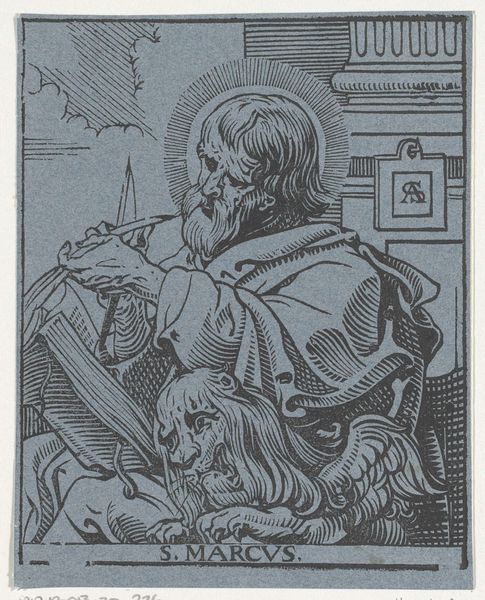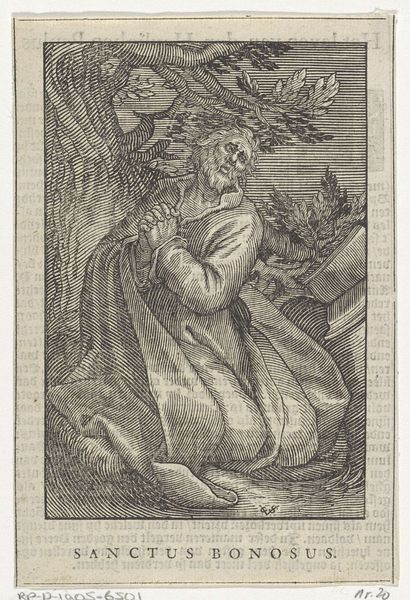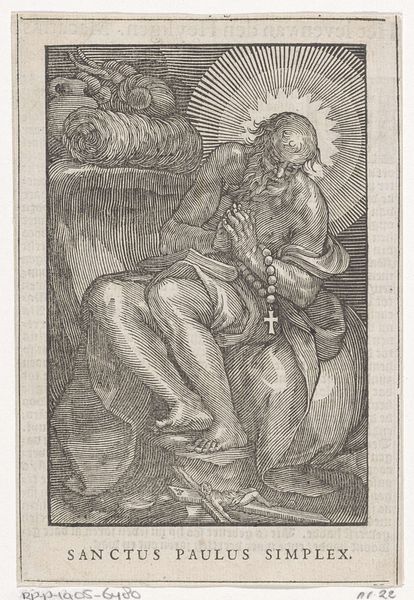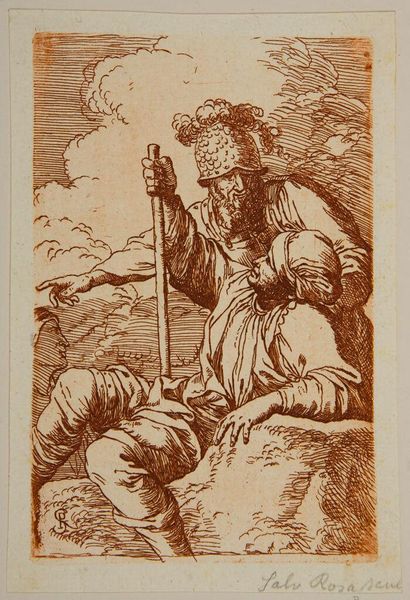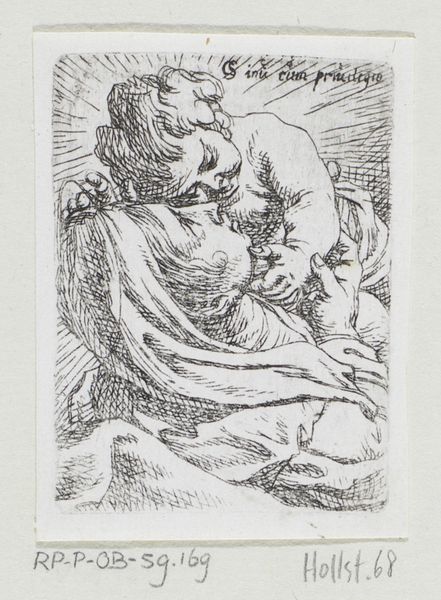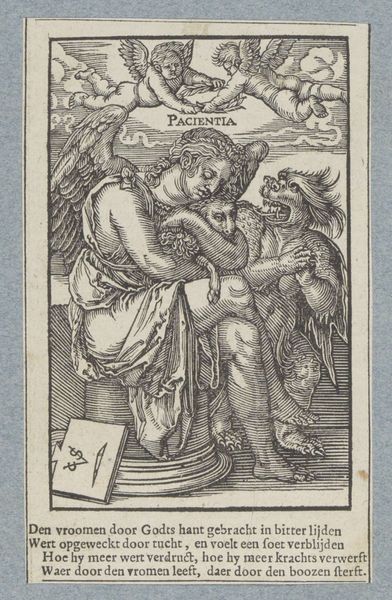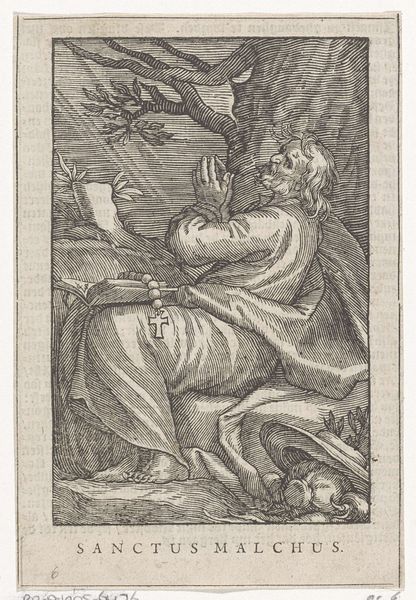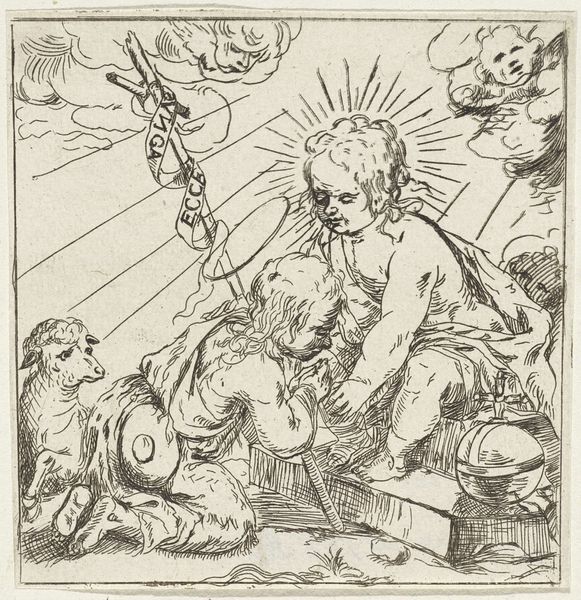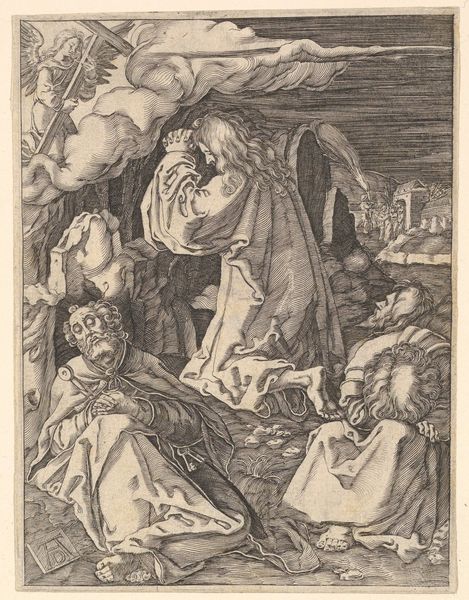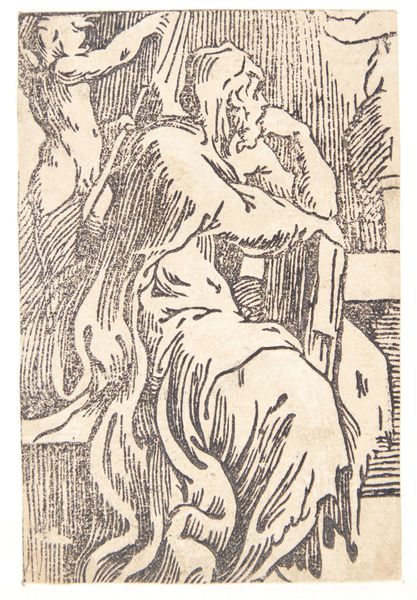
print, engraving
#
portrait
#
baroque
# print
#
figuration
#
line
#
history-painting
#
engraving
Dimensions: height 139 mm, width 115 mm
Copyright: Rijks Museum: Open Domain
Editor: This is Antoine Sallaert's "Matteüs de evangelist," created sometime between 1590 and 1650. It's a Baroque engraving. It seems to capture a moment of divine inspiration, but what strikes me is how the lines themselves create the drama and texture. What do you see in this print? Curator: This piece screams material production! Look at the tools depicted - the quill, the inkwell. They highlight the *process* of creation, the very labor involved in spreading the word. How do the means of creating such artworks get consumed by an elite class and made more widespread through printing? It calls into question who controls the means of disseminating not just information, but artistic representation, at the time of its making. Editor: So, you are focusing on the cultural implications of its distribution as an engraved print, instead of its spiritual essence. It's interesting that the image of the evangelist actually calls our attention to labor of printing and dissemination...almost an early form of media criticism. Curator: Precisely. This engraving speaks to the socio-economic conditions of artistic production. Think about the engraver's skill, the workshop setting, and how prints democratized access to religious imagery – disrupting the exclusivity previously held by painting. This image served a devotional purpose, yes, but it’s equally a *product* manufactured through specific, and changing, means of cultural and material distribution. What labor made it accessible? Editor: That's a powerful reinterpretation! It reframes a seemingly pious image into a commentary on labor, technology, and access in the late Renaissance or early Baroque. The artist's means are, literally, the message! Thanks for pointing out this undercurrent. Curator: And thanks for noticing its immediate presence and impact! It’s a crucial question for all artwork: who made this and for whom was it really made, materially and politically?
Comments
No comments
Be the first to comment and join the conversation on the ultimate creative platform.
